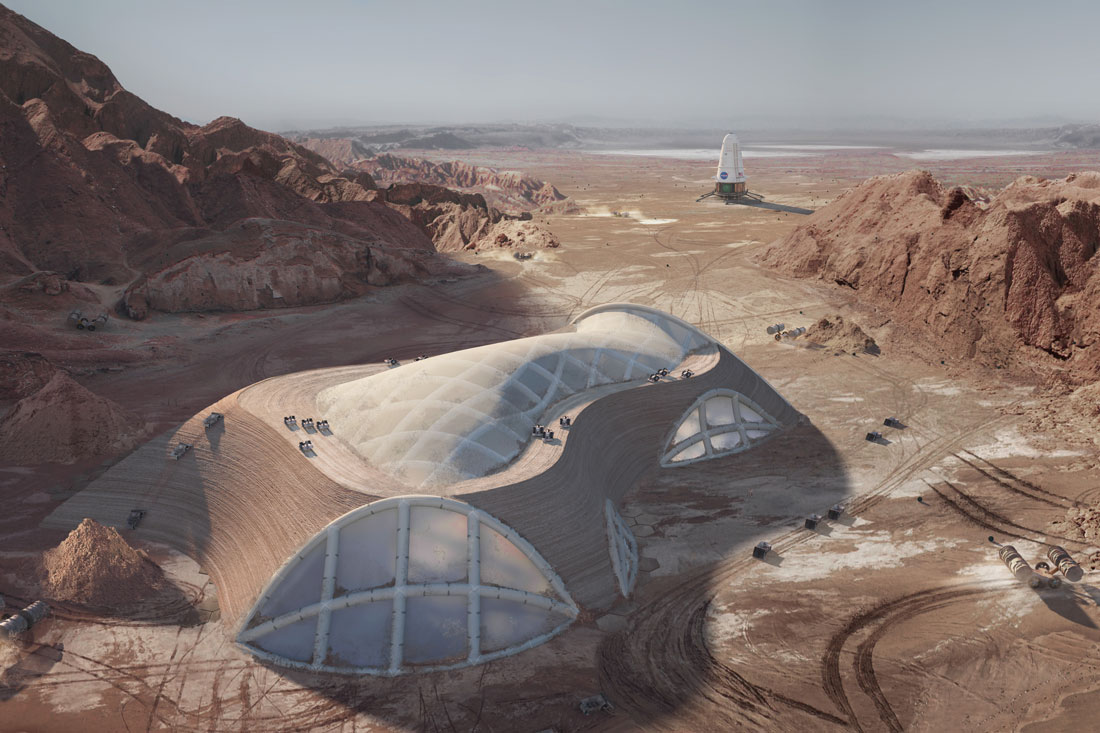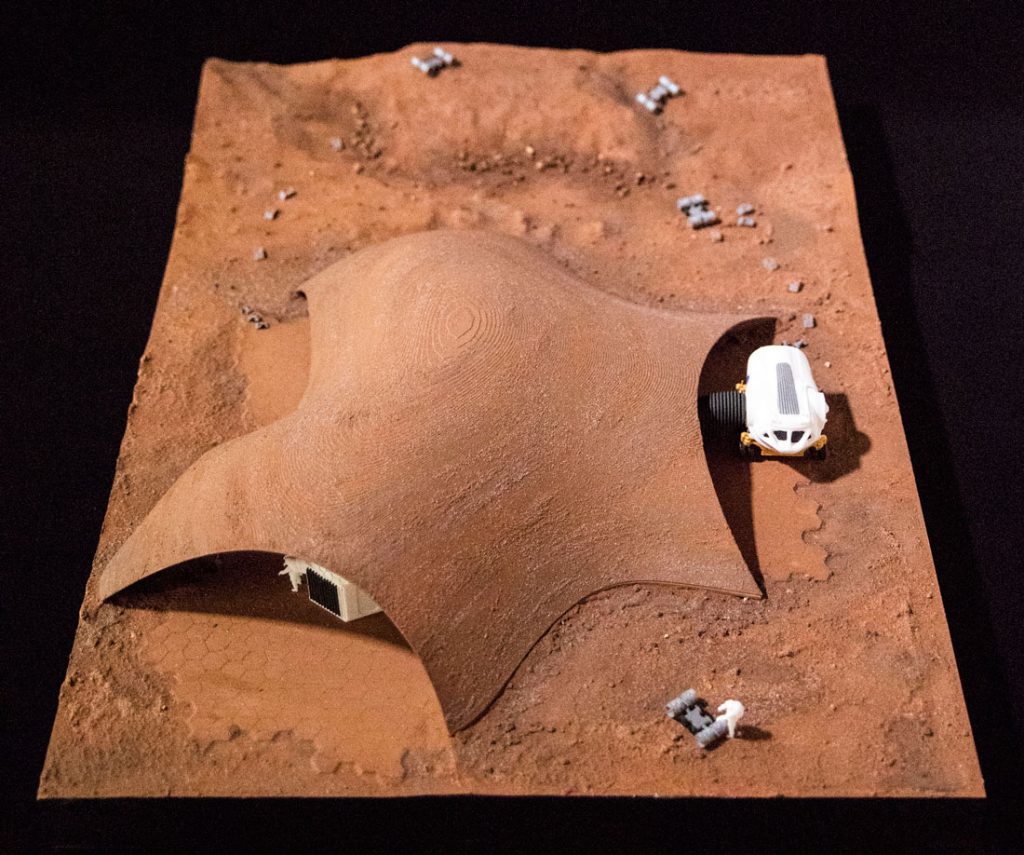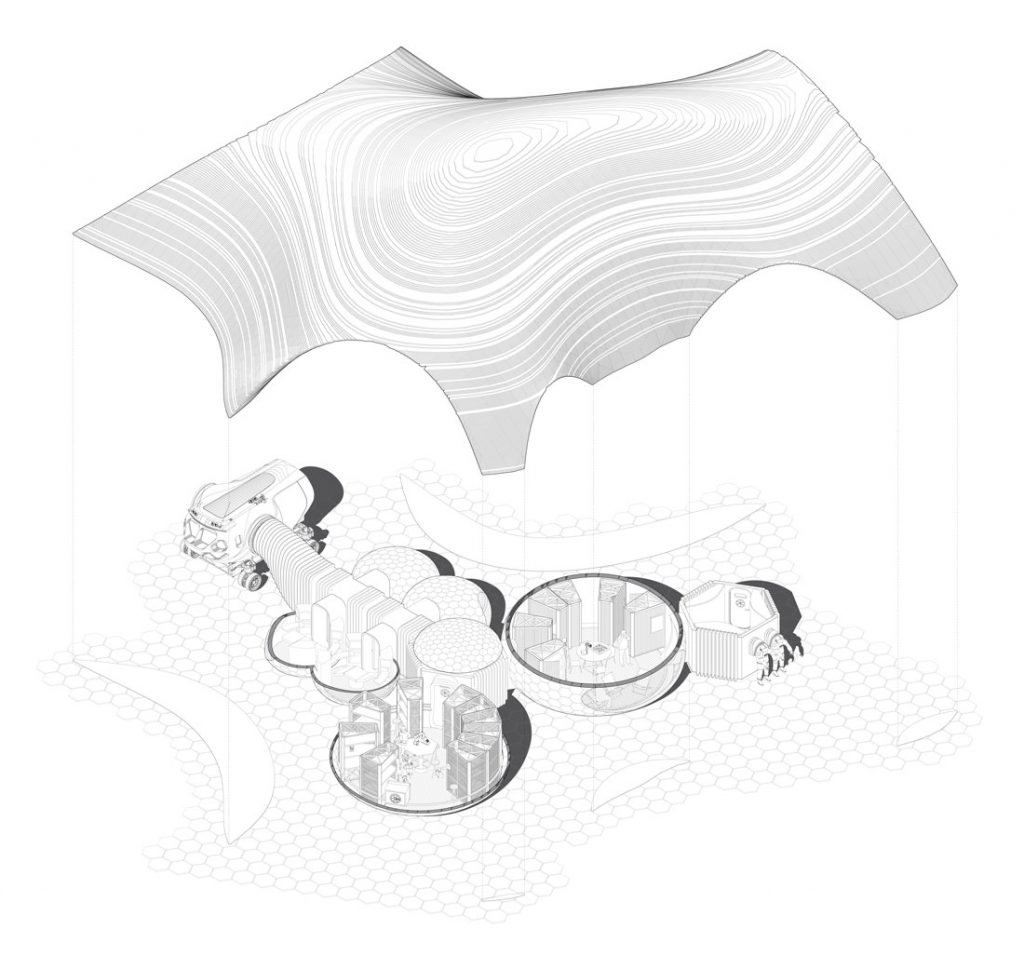After reaching the final stages of NASA’s 3D-Printed Habitat Challenge for Mars, Xavier De Kestelier, Principal and Head of Design Technology and Innovation at HASSELL, shares his thoughts on the latest computational and technological tools in the design studio.

October 3rd, 2018
“Design is a human endeavour; the intellectual, human element is essential and should never be sacrificed, no matter how great the new tools and technology may be,” advocates Xavier De Kestelier, who spearheads design technology and innovation at HASSELL.
While the development of architectural history has largely been parallel to technological advancement, De Kestelier reminds us that even the most cutting-edge technology should still be just one of many tools at a designer’s disposal – not unlike pencil and paper. It is therefore crucial that designers question such technology and determine how it will benefit the design process. Design should take precedence over technology, not vice versa.

Xavier De Kestelier, Principal and Head of Design Technology and Innovation at HASSELL
Equally important is to recognise that many ‘revolutionary’ technologies are still limited in scope, especially for the construction industry. Just as people did not stop buying books following the advent of 2D home printers, new technologies such as 3D printing will not bring about immediate drastic changes.
Nevertheless, there has been real impact in specific consumer product industries. For example, hearing aids are now 3D printed; the technology had been instrumental in improving production cost and efficiency. Adidas has also commercially launched the first 3D-printed trainers this year.
“On the other hand, we are a long way from 3D printing houses… so 3D printing is not always the right answer,” adds De Kestelier. This critical understanding of technology and design methodology guided HASSELL’s proposal for NASA’s 3D-Printed Habitat Challenge, which proposed a two-layered system – a hard 3D-printed shell set up in advance by robots, and a softer, inflatable internal layer to be installed within by astronauts upon arrival on Mars.

De Kestelier is also actively involved in academic and research work and is a Director at non-profit organisation Smartgeometry. Currently, he’s also part of an industry group at UCL Bartlett looking into blockchain technology and how it could change the construction indstry. While still in its preliminary stages, the group is certain of its impact, particularly in the vital areas such as building and structure procurement, and tracking and ownership of documentation. “These things will certainly change our industry. We’re just not completely sure how yet,” he says.
While the production buildings will become increasingly easy in the future, suggests De Kestelier, it is also apparent that design will become more integral to the process. Designers should look to expand the role of architectural design beyond its conventional brick-and-mortar scope. He elaborates: “The design of the Mars habitat is a good example – you’d think as architects we wouldn’t be involved and that the design would come down to engineers, but actually, we play a fundamental role.”

HASSELL in collaboration with engineering firm Eckersley O’Callaghan was a TOP 10 Finalist (Phase 3) for the NASA 3D-Printed Habitat Challenge, which invited innovative ideas for a functional shelter on Mars. Images courtesy of HASSELL.
A searchable and comprehensive guide for specifying leading products and their suppliers
Keep up to date with the latest and greatest from our industry BFF's!

The Sub-Zero Wolf showrooms in Sydney and Melbourne provide a creative experience unlike any other. Now showcasing all-new product ranges, the showrooms present a unique perspective on the future of kitchens, homes and lifestyles.

Sub-Zero and Wolf’s prestigious Kitchen Design Contest (KDC) has celebrated the very best in kitchen innovation and aesthetics for three decades now. Recognising premier kitchen design professionals from around the globe, the KDC facilitates innovation, style and functionality that pushes boundaries.

Create a configuration to suit your needs with this curved collection.

Channelling the enchanting ambience of the Caffè Greco in Rome, Budapest’s historic Gerbeaud, and Grossi Florentino in Melbourne, Ross Didier’s new collection evokes the designer’s affinity for café experience, while delivering refined seating for contemporary hospitality interiors.

Simon Liley, Principal Sustainability Consultant at Cundall, writes about how cyberpunk dystopias haven’t (quite) come to pass yet – and how designers can avoid them.

Caring for our mental health is paramount these days and architecture and design can lead the way as Hassell shows in its latest project in Queensland.
The internet never sleeps! Here's the stuff you might have missed

In Malaysia Spacemen has created a world of perfumed wonder with their latest project, Trove, where treasures abound.

As one of the many entries to The Social Space category at the 2024 INDE.Awards, this community centre is something out of the ordinary through its architectural design, that also provides a place for community and connection for many.